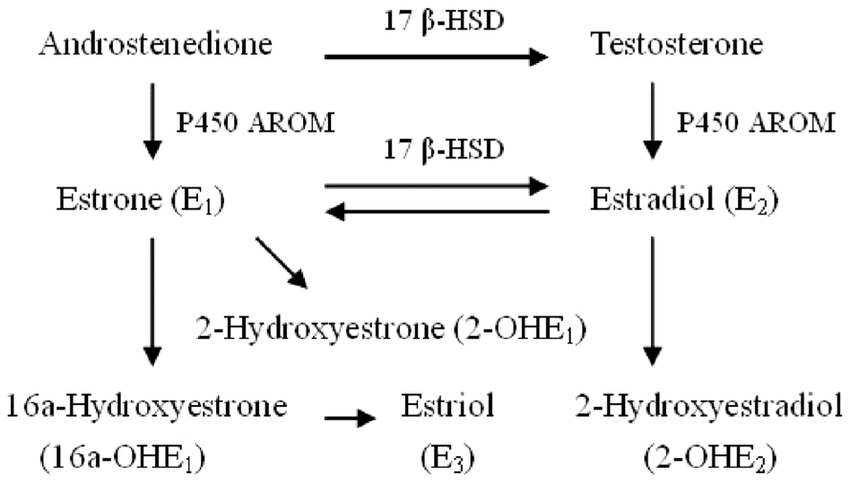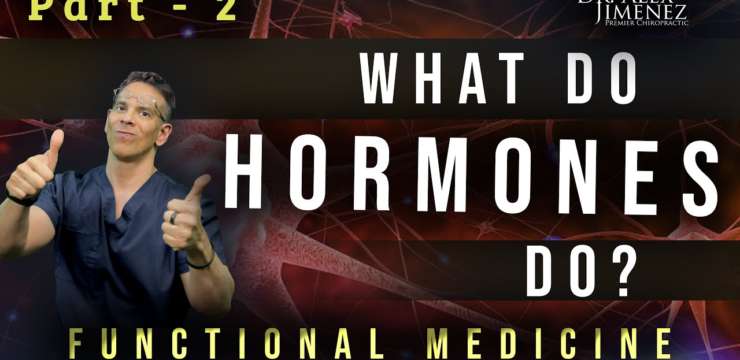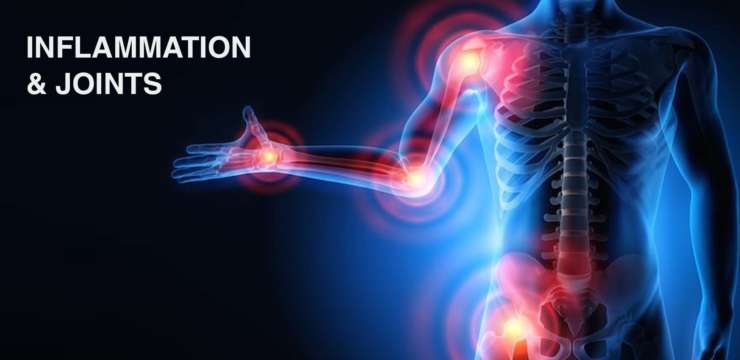
Table of Contents
Introduction
Hormones come from the endocrine system through many glands throughout the body. These hormones are being secreted out of these glands and are being transported throughout the body and into their appropriate organs so that way it’s doing its job correctly. When there are unwanted pathogens or disruptors that are affecting the body, it can cause the hormone levels to go haywire and over time develop into chronic illnesses. In this 2 part series, we will be discussing and taking a look at estrogen, its two pathways of detoxification, and different strategies that are beneficial to the body by detoxing endocrine disruptors. Part 1 discussed what are endocrine disruptors, how they affect the body, and how estrogen is metabolized as well. By referring patients to qualified and skilled providers who specialized in hormone wellness services. To that end, and when appropriate, we advise our patients to refer to our associated medical providers based on their examination. We find that education is the key to asking valuable questions to our providers. Dr. Jimenez DC provides this information as an educational service only. Disclaimer
Can my insurance cover it? Yes, in case you are uncertain here is the link to all the insurance providers we cover. If you have any questions, please call Dr. Jimenez at 915-850-0900.
What Is Estrogen Metabolism?
In part 1, it talked about how estrogen was being metabolized in the body. The female body has two hormones that make the body work properly and they are estrogen and progesterone. These two hormones help the female body by regulating the heart rate, controlling the body’s metabolism, helping the reproductive system, and influencing behavior and mood. When there is unused estrogen in the female body, studies show that the metabolism of estrogen is in the liver and goes through Phase 1 and 2 pathways to be detoxified and excreted out of the body. Research shows that the body goes through biotransformation, which is a metabolic process that takes place mainly in the liver and helps excrete both exogenous and endogenous substances that the body does not need. Both phase 1 and 2 pathways are very important for detoxification of the body so that way endocrine disruptors can not harm the body any further.
Phase 1
In phase 1 detoxification in the body, it is considered the major pathway that takes the estrone hormone and turned it into 2-Hydroxyestrone or 2-OHE1 metabolite. The 2-OHE1 metabolite has a very little estrogen receptor binding affinity and has been shown to decrease cell proliferation by 20 to 30% in cultured breast cancer cell lines. While that is going through the process, the cytochrome P450 1B1 or CYP1B1 is responsible for the body since it has a specific estrogen-4-hydroxylase activity, that is present in tissues such as the uterus, breast, ovary, and prostate, which often gives rise to hormone-responsive
cancers.
Phase 2
In phase 2 of the detoxification in the body, it is not the most researched pathway but it helps the body through the detoxification and plays a role in methylation. There are subclasses that phase 2 provides the body go through the detox process. They are:
- Sulfation & Glucuronidation: Which are phenolic compounds that are in many steroid hormones and fat-soluble vitamins.
- Acetylation & Methylation: Which are metals and minerals that are in many neurotransmitters.
- Amino Acid Conjugation: Which are aliphatic compounds that are in fatty acids and bile acids.
- Glutathione Conjugation: These are in many xenobiotics especially in toxic metals but are small carbon molecules, prostaglandins, and lipid peroxides.
The Role Of Methylation
The role of methylation is when the 2-OH and 4-OH estrogen metabolites are being furthered detoxified in the body. This is highly important because it can help make the 4-OH estrogen metabolites less active and activate the 2-OH. The 2-OHE1 is only protective against breast cancer when methylated by
catechol-O-methyltransferase (COMT) and studies show the expression and methylation of the COMT genes that are responsible for estrogen metabolism. Not only that but the 4-OHE1 is less likely to oxidize to carcinogenic compounds if it is neutralized by the COMT gene. Another study also shows that the DNA methylation status of the genes is responsible for heritable traits and varies more or less independently of the body’s genetic code.
Detoxifying Strategies For Endocrine Disruptors
There are many ways detoxifying strategies that can help the body dampen the effects that are caused by endocrine disruptors. Since endocrine disruptors can be natural or manmade they can enter the body and can be the cause of the development of chronic illnesses over time. Some of the best detoxifying strategies for stopping the risk of endocrine disruptors include:
- Addressing the gut microbiota
- Getting regular exercise incorporated
- Getting adequate sleep
- Decreasing insulin stimulation
Address The Gut Microbiota
The best way to know what is wrong with the body is by addressing the gut microbiota. The gut system is where it hosts many microbial cells that influence the entire body’s physiology, metabolism, nutrition, and immune function. Studies have shown that when there are disruptions in the gut, it is linked to many gastrointestinal conditions like IBD (inflammatory bowel disease) and obesity. By understanding what is causing the gut microbiota to be dysfunctional and going through an elimination diet, adding probiotics to feed the good bacteria, and eliminating the cause that is hurting the gut can repair the intestinal permeability.
Exercise
When individuals don’t get enough exercise, it can lead to underlying conditions of obesity and diabetes. And studies show that endocrine disruptors can directly affect sex hormone levels and even physical activity levels. When this happens it can cause the individual to not get motivated to work out and get the adequate amount of exercise they need for a healthy body. By providing the right amount of exercise to the individual, it can dampen the effects of endocrine disruptors through sweat and it can make the body feel good and start on its wellness journey.
Sleep
Everyone needs the right amount of sleep, without it it can cause unwanted issues that can affect the body. Studies show that when the body can’t relax and the neurohormonal changes can cause cognitive behavior like sleep deprivation, inflammation, and can increase cortisol levels. By changing the nighttime routine, individuals can slowly get their sleep schedule back by taking a bit of melatonin before bed, shutting off their phones, and sleeping in a dark, cool room to get those necessary 8 hours of sleep.
Decrease Insulin Stimulation
Insulin is the sugar that feeds the brain and makes the body go with the motion. Too much of it, however and the body will develop insulin resistance and can cause harm to the body. This is dangerous for individuals that have diabetes since they have to keep an eye on their glucose levels. Studies have shown that by decreasing insulin stimulation through physical activity, a change of diet, and sleep patterns, the body won’t develop insulin resistance and the blood glucose levels will start to regulate normally.
Conclusion
All in all, by eliminating endocrine disruptors from the body, an individual can start feeling better and their body won’t develop underlying conditions and chronic illnesses. When there is prolonged endocrine disruption, the body will develop chronic illnesses over time and the body will be dealing with the pain. With the right amount of exercise, changing a way a person eats and getting enough sleep the body can begin the healing process and have a functional body.
References
Admin, MI. “Science Review: Estrogen Metabolism: Metagenics Institute.†Metagenics Institute | Your Trusted Health, Nutrition, and Personalized Lifestyle Medicine Resource, 14 Jan. 2020, www.metagenicsinstitute.com/ce-education/science-sheets/estrogen-metabolism.
Aldabal, Laila, and Ahmed S Bahammam. “Metabolic, Endocrine, and Immune Consequences of Sleep Deprivation.†The Open Respiratory Medicine Journal, Bentham Open, 2011, www.ncbi.nlm.nih.gov/pmc/articles/PMC3132857/.
Chagay, N B, and A M Mkrtumyan. “[Estrogen Metabolism, Lifetime Methylation Disorders, and Breast Cancer].†Problemy Endokrinologii, U.S. National Library of Medicine, 12 Sept. 2019, pubmed.ncbi.nlm.nih.gov/31566312/.
Guinane, Caitriona M, and Paul D Cotter. “Role of the Gut Microbiota in Health and Chronic Gastrointestinal Disease: Understanding a Hidden Metabolic Organ.†Therapeutic Advances in Gastroenterology, SAGE Publications, July 2013, www.ncbi.nlm.nih.gov/pmc/articles/PMC3667473/.
Phang-Lyn, Simone, and Valerie A Llerena. “Biochemistry, Biotransformation.†StatPearls [Internet]., U.S. National Library of Medicine, 30 Aug. 2021, www.ncbi.nlm.nih.gov/books/NBK544353/.
Schmitt, Emily E, et al. “Environmental Endocrine Disruptor Affects Voluntary Physical Activity in Mice.†Medicine and Science in Sports and Exercise, U.S. National Library of Medicine, July 2016, www.ncbi.nlm.nih.gov/pmc/articles/PMC4911329/.
Uley, Clayton L, et al. “The Impact of Metabolism on DNA Methylation.†Human Molecular Genetics, U.S. National Library of Medicine, Apr. 2005, pubmed.ncbi.nlm.nih.gov/15809266/.
Wilcox, Gisela. “Insulin and Insulin Resistance.†The Clinical Biochemist. Reviews, U.S. National Library of Medicine, May 2005, www.ncbi.nlm.nih.gov/pmc/articles/PMC1204764/.
Disclaimer
Disclaimers
Professional Scope of Practice *
The information herein on "A Look At Detoxifying Strategies For Endocrine Disruptors | Part 2" is not intended to replace a one-on-one relationship with a qualified health care professional or licensed physician and is not medical advice. We encourage you to make healthcare decisions based on your research and partnership with a qualified healthcare professional.
Blog Information & Scope Discussions
Welcome to El Paso's wellness blog, where Dr. Alex Jimenez, DC, FNP-C, a board-certified Family Practice Nurse Practitioner (FNP-C) and Chiropractor (DC), presents insights on how our team is dedicated to holistic healing and personalized care. Our practice aligns with evidence-based treatment protocols inspired by integrative medicine principles, similar to those found on dralexjimenez.com, focusing on restoring health naturally for patients of all ages.
Our areas of chiropractic practice include Wellness & Nutrition, Chronic Pain, Personal Injury, Auto Accident Care, Work Injuries, Back Injury, Low Back Pain, Neck Pain, Migraine Headaches, Sports Injuries, Severe Sciatica, Scoliosis, Complex Herniated Discs, Fibromyalgia, Chronic Pain, Complex Injuries, Stress Management, Functional Medicine Treatments, and in-scope care protocols.
Our information scope is limited to chiropractic, musculoskeletal, physical medicine, wellness, contributing etiological viscerosomatic disturbances within clinical presentations, associated somato-visceral reflex clinical dynamics, subluxation complexes, sensitive health issues, and functional medicine articles, topics, and discussions.
We provide and present clinical collaboration with specialists from various disciplines. Each specialist is governed by their professional scope of practice and their jurisdiction of licensure. We use functional health & wellness protocols to treat and support care for the injuries or disorders of the musculoskeletal system.
Our videos, posts, topics, subjects, and insights cover clinical matters, issues, and topics that relate to and directly or indirectly support our clinical scope of practice.*
Our office has reasonably attempted to provide supportive citations and has identified the relevant research studies or studies supporting our posts. We provide copies of supporting research studies available to regulatory boards and the public upon request.
We understand that we cover matters that require an additional explanation of how they may assist in a particular care plan or treatment protocol; therefore, to discuss the subject matter above further, please feel free to ask Dr. Alex Jimenez, DC, APRN, FNP-BC, or contact us at 915-850-0900.
We are here to help you and your family.
Blessings
Dr. Alex Jimenez DC, MSACP, APRN, FNP-BC*, CCST, IFMCP, CFMP, ATN
email: coach@elpasofunctionalmedicine.com
Licensed as a Doctor of Chiropractic (DC) in Texas & New Mexico*
Texas DC License # TX5807
New Mexico DC License # NM-DC2182
Licensed as a Registered Nurse (RN*) in Texas & Multistate
Texas RN License # 1191402
ANCC FNP-BC: Board Certified Nurse Practitioner*
Compact Status: Multi-State License: Authorized to Practice in 40 States*
Graduate with Honors: ICHS: MSN-FNP (Family Nurse Practitioner Program)
Degree Granted. Master's in Family Practice MSN Diploma (Cum Laude)
Dr. Alex Jimenez, DC, APRN, FNP-BC*, CFMP, IFMCP, ATN, CCST
My Digital Business Card









